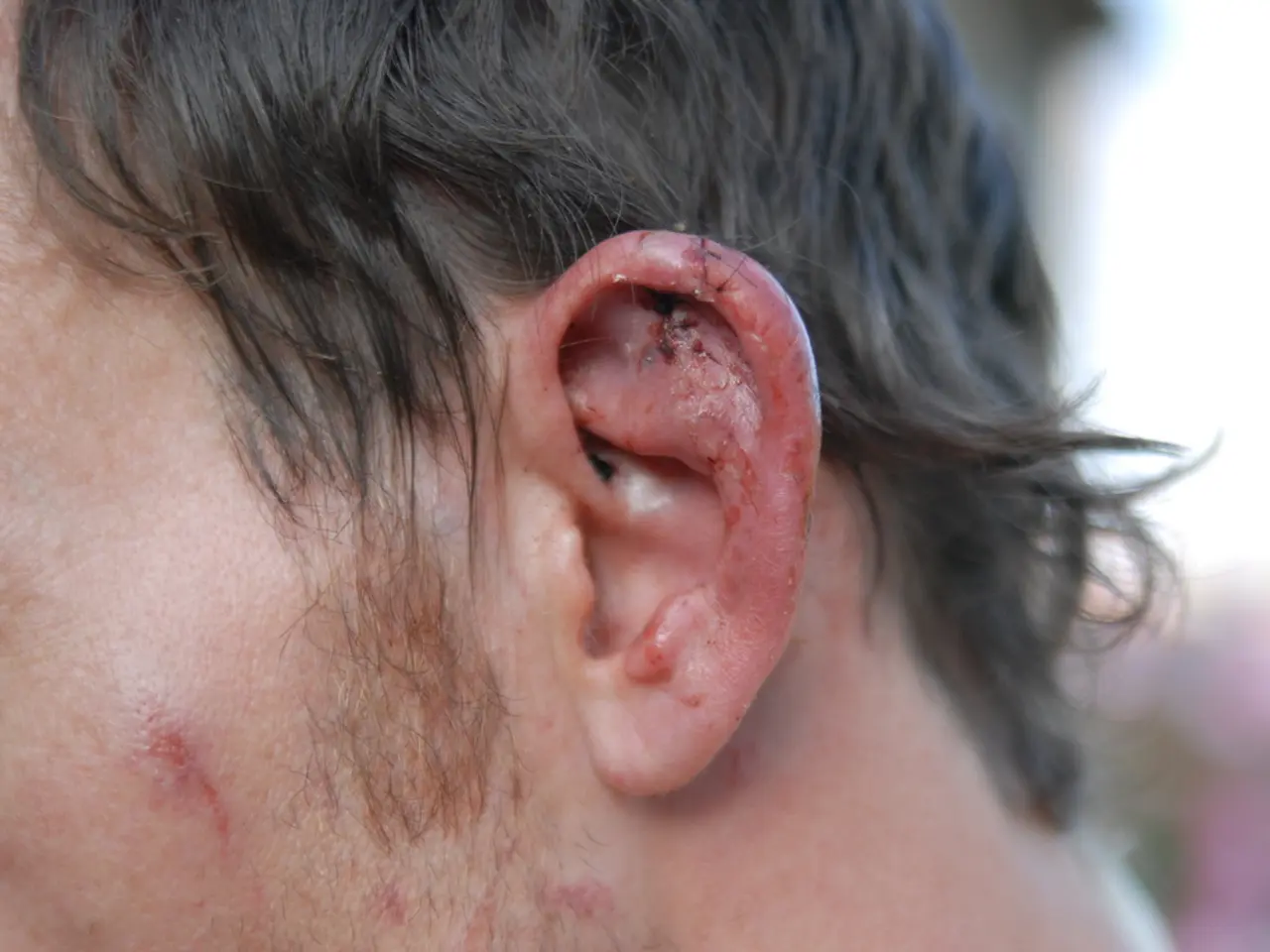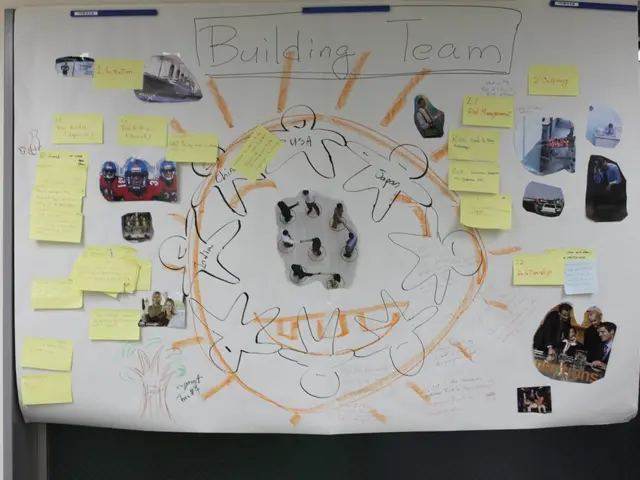Collapsing: Reasons, identification, and management
Fainting, or syncope, is a common and temporary loss of consciousness due to a slight decrease in oxygen reaching the brain. This article explores the various causes, symptoms, and preventive measures associated with fainting.
Neurocardiogenic syncope, also known as vasovagal syncope, is one of the most common causes of fainting. Triggers for this condition include emotional stress, pain, orthostatic changes, prolonged standing, heat exposure or dehydration, sight of blood or medical procedures, and carotid sinus syndrome (pressure on the carotid sinus in the carotid artery).
In neurocardiogenic syncope, a drop in blood pressure slows the heartbeat and pulse rate, temporarily affecting the brain's blood and oxygen supply. This is caused by an abnormal reflex involving the autonomic nervous system, leading to increased parasympathetic (vagal) activity and decreased sympathetic activity.
Breath-holding and fainting in infants can occur when they are upset or afraid or experience a shock or pain. They may cry and then be silent while holding their breath, losing consciousness for 1-2 minutes.
Cardiac syncope occurs due to an underlying heart problem that affects the blood and oxygen supply to the brain. Possible heart conditions include arrhythmias, stenosis, pulmonary embolism, heart attack, heart failure, hypertension, or presyncope or near syncope (a feeling that a person was going to faint but did not).
Fainting can occur in children, affecting around 15% of those aged under 18 years, with most causes being benign. In some cases, an infant or child may faint after holding their breath for up to 1 minute, and this type of fainting is not uncommon, with children who experience it usually doing so only until they are 4-5 years old.
Presyncope or near syncope is a feeling that a person was going to faint but did not, and it is characterized by symptoms such as lightheadedness, weakness, warmth, sweating, nausea, palpitations, blurry vision, and changes in heart rhythms. An episode of presyncope can last from several seconds up to a few minutes.
If a person faints and does not have a health condition, they may be able to prevent future episodes by avoiding triggers, such as standing for a long time. For those who are likely to faint at the sight or thought of an injection or blood, it is advisable to inform a healthcare professional before undergoing a medical procedure that may involve this.
In most cases, an appropriate intake of fluids and electrolytes is enough to resolve fainting in children, although some may need other types of medication. If a person notices that somebody is fainting, has fainted, or is about to faint, they can help by helping the person lie down on their back, checking for any injuries, raising their legs above heart level to restore blood flow to the brain, ensuring there is plenty of fresh air, and if there is a crowd, asking other people to move away.
If the person is not breathing or remains unresponsive, someone should call for emergency help and prepare to do CPR if they know how to do it. It is also crucial to be aware of different underlying conditions that can cause a person to faint, including neurocardiogenic syncope, occupational syncope, carotid sinus syndrome, orthostatic hypotension, cardiac syncope, and presyncope or near syncope.
Orthostatic hypotension occurs when gravity pulls blood into the legs, bringing down blood pressure elsewhere in the body. Triggers of orthostatic hypotension may include having lower than normal blood volume, having diabetes, vitamin B12 deficiency, or another condition that affects the peripheral nervous system, using medications such as diuretics, beta-blockers, or antihypertensive drugs, having Parkinson's disease or other conditions that affect the nervous system, or having idiopathic orthostatic hypotension (where there is no clear cause).
In conclusion, understanding the causes and symptoms of fainting can help individuals take preventive measures and respond appropriately when someone is fainting. If in doubt, always seek medical advice and assistance.
- Neurocardiogenic syncope, a common cause of fainting, can be triggered by emotional stress, pain, prolonged standing, heat exposure, dehydration, sight of blood, medical procedures, or carotid sinus syndrome.
- Breath-holding and fainting in infants may occur due to upset, fear, shock, or pain, causing them to hold their breath for 1-2 minutes and lose consciousness.
- Cardiac syncope can be caused by arrhythmias, stenosis, pulmonary embolism, heart attack, heart failure, hypertension, or presyncope, which is a feeling of impending fainting without losing consciousness.
- Presyncope or near syncope is characterized by symptoms such as lightheadedness, weakness, warmth, sweating, nausea, palpitations, blurry vision, and changes in heart rhythms.
- Avoiding triggers like prolonged standing can help prevent fainting in some individuals, while those prone to fainting at the sight of injections or blood should inform healthcare professionals.
- In children, fainting is common but usually benign, and most children stop experiencing it by age 4-5.
- If a person faints, help them lie down on their back, check for injuries, raise their legs above heart level, ensure fresh air, and move onlookers if there is a crowd.
- An appropriate fluid and electrolyte intake can resolve fainting in children, but some may require additional medication.
- In emergency situations where the person is unresponsive or not breathing, call for emergency help and be prepared to perform CPR if trained.
- Different medical conditions, such as neurocardiogenic syncope, orthostatic hypotension, carotid sinus syndrome, and presyncope, can cause fainting and should be kept in mind.
- Orthostatic hypotension can be triggered by lower than normal blood volume, diabetes, vitamin B12 deficiency, medications, nervous system conditions, or idiopathic orthostatic hypotension.
- By understanding the causes and symptoms of fainting, individuals can take preventive measures and respond appropriately, but seeking medical advice and assistance is crucial when in doubt.







